If you own a Cessna or other certificated airplane, you need to get an annual inspection every year. If you own an Experimental/Amateur-Built airplane, you will need a yearly condition inspection. The difference is that certificated airplanes must be shown to be in compliance with their type certificates—Experimentals do not have type certificates, so their condition inspections are somewhat different.
An Experimental must be found to be in a “condition for safe operation.” There is no prescribed standard for making that determination other than Part 43, appendix D of the FARs. That means that you, as the holder of a Repairman Certificate or your A&P mechanic, must make that call. This places an extra responsibility on aircraft owners to determine what is safe, but the FAA has not left you without guidance. There is a lot of good information in Part 43, Appendix D. Let’s take a look at how that can help you perform a good condition inspection.
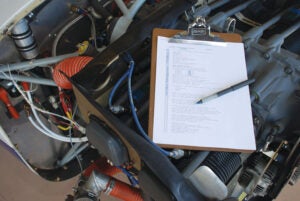
First, who can perform a yearly condition inspection? If you built your airplane and received a Repairman Certificate from the FAA, you are eligible to perform this inspection. If you built your plane but never got the Repairman Certificate, why not? Get down to your local FAA FSDO office with your airplane paperwork, your builder’s log with photos (the FAA guys love to see photos) and a photo ID to apply for one right now. If you are not the builder, you will need to find a licensed A&P mechanic to perform and sign off your inspection. Unlike a certificated airplane owner, you do not need an A&P with Inspection Authorization (IA). Even if you have a Repairman Certificate, if this is your first time performing a yearly condition inspection, it’s a good idea to seek out the assistance of someone with experience to guide you through the process. Experimental-Light Sport (E-LSA) owners have a separate set of rules to deal with, so be sure to check if this applies to you.
The first question many new owners have is, what do I inspect? To find the answer, look at FAR Part 43, Appendix D. The FAA provides a list of what it wants to see checked, and this is where you can find it. When you are finished with your inspection, you will attest to covering the items on this list with the following statement:
I certify that this aircraft has been inspected on (date) in accordance with the scope and detail of 14CFR Part 43, Appendix D, and was found it to be in a condition for safe operation.
The entry will include the aircraft’s total time in service and the name, signature, certificate number and type of certificate held by the person performing the inspection. If you can’t find this article when it is time to do your inspection, look for the required language in your operating limitations.
Before you get started, you should be sure all of your paperwork is in order. You need to have an airworthiness certificate displayed inside your aircraft. You also need to have the registration in the plane, but it does not need to be displayed. Along with the airworthiness certificate, you need to have your operating limitations and your weight and balance. Of course, these items need to match up with the data plate. If anything is missing or awry, you need to fix it.
The inspection begins by cleaning the aircraft inside and out, including the engine compartment and engine. If it isn’t clean, you can’t really see what kind of shape it is in. The regulations cover the inspection process step by step. There isn’t a lot of detail, but it shouldn’t be hard to create a detailed checklist from the guidelines provided. We will follow the scope and language of Part 43, Appendix D. Words in italics are taken directly from the FAA regulation.
Fuselage and Hull
(1) Inspect the fabric and skin for signs of deterioration, distortion, other evidence of failure and defective or insecure attachment of fittings. With fabric aircraft, this means a thorough inspection of all fabric-covered surfaces with further testing in any questionable areas. Expect to see the first signs of trouble on the tops of wings and fuselage—areas exposed to the sun. For metal, cracking and corrosion will get most of your attention, but also be on the lookout for missing fasteners or smoking rivets. Composite airplanes need to be checked for cracking and delamination.
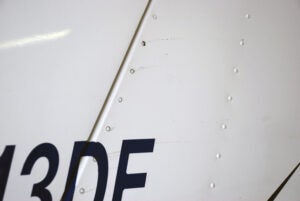
(2) Inspect systems and components for improper installation, apparent defects and unsatisfactory operation. Anything attached to or a part of the fuselage is covered here. This could include cabin and baggage doors, static ports, fuel drains, antennas, fairings, control cables and flying wires or other items. These will vary from plane to plane, and some items may be covered in other sections. Just be sure all items are covered somewhere. Every item should be in good condition and functioning properly.
(3) Envelope, gas bags, ballast tanks and related parts—for poor condition. Most aircraft do not have these items, but if yours does it is important to inspect them carefully.
Cabin and Cockpit
(1) Generally—for uncleanliness and loose equipment that might foul the controls. A clean plane is a happy plane. If it isn’t clean, it can’t really be properly inspected. Beyond that foreign debris, “spare” parts, tools, loose wires and other such things can lodge in controls and lead to catastrophic problems. As a rule, keep a careful account of all tools used and make sure you get them all back when you are finished. A missing tool or small part could jam your controls. Even a missing washer needs to be tracked down and removed. The temptation to let it go can be strong, but it should be resisted.
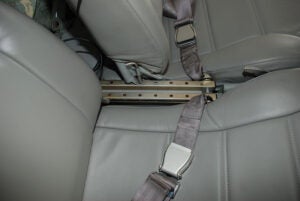
(2) Seats and safety belts—for poor condition and apparent defects. Obviously, seat belts and shoulder harnesses are important. Replace them if there is any doubt about their condition. Check bolts that secure them to the airframe and replace as needed. If you don’t have shoulder harnesses, this would be a good time to install them. The life they save could be your own.
(3) Windows and windshields—for deterioration and breakage. Windows and windshields should be free of cracks, excessive crazing and defects that would impair your ability to see. Cracks that do not impair vision can be stop drilled to keep them from spreading. An ounce of prevention is worth a pound of cure here. Be sure when installing these items that they are free of nicks and stress, and be sure to only use clean towels and proper solutions when cleaning. No paper towels, please, and no wiping dry windows.
(4) Instruments—for poor condition, mounting, marking and (where practicable) improper operation. Instruments that don’t work need to be placarded as such, but better yet just fix them or remove them. Anything that is required will obviously need to be repaired or replaced. This category is very specific to your airplane since there are an almost infinite number of possible instrument combinations available. Check your tachometer with a strobe-type instrument. If you don’t own or have access to one, this is a good thing for an EAA chapter to buy and share among its members.
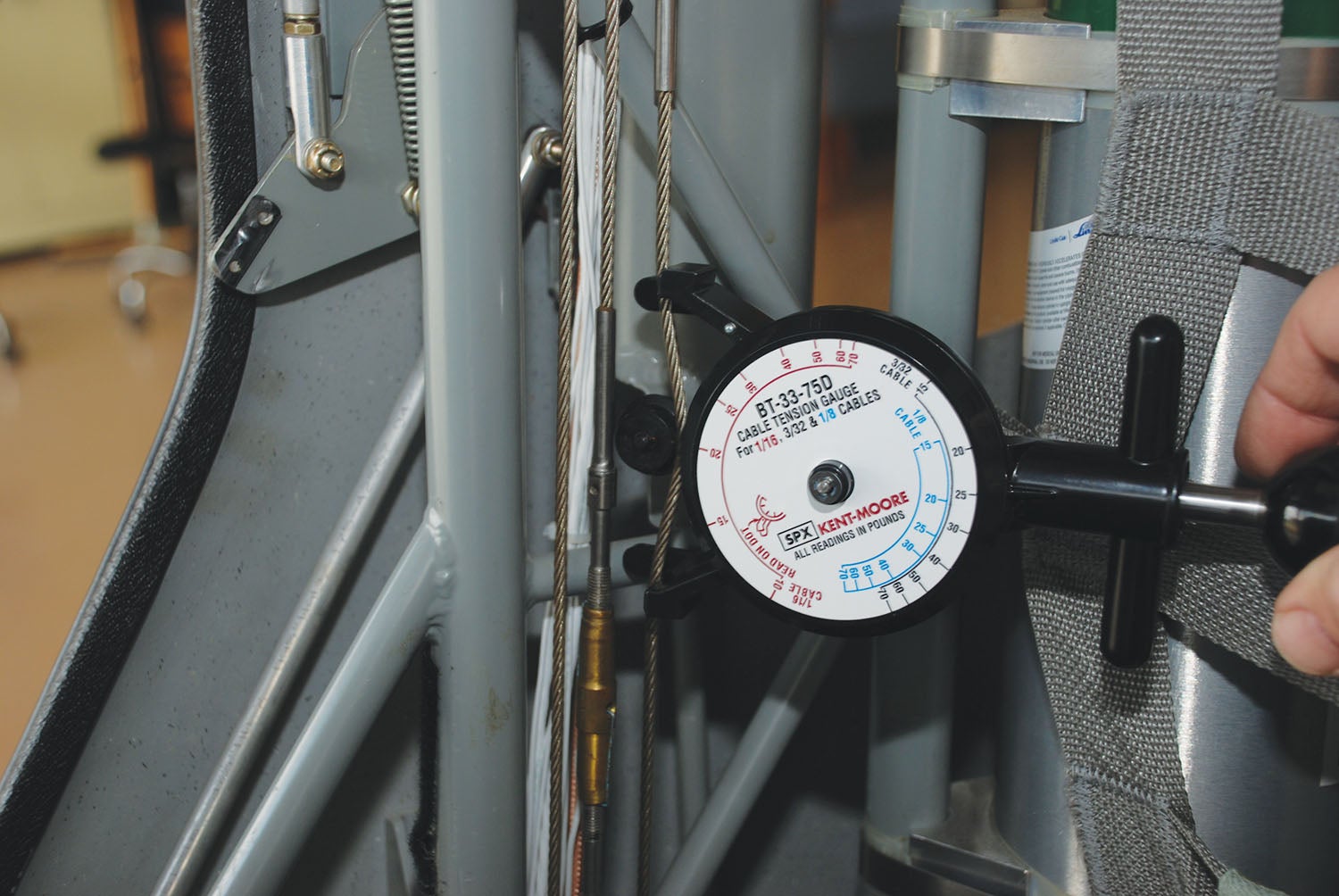
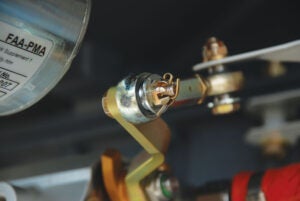
(5) Flight and engine controls—for improper installation and improper operation. When you open up all those inspection holes in your wings, you are making it possible to see all the rod ends, cables and bellcranks that make up the flight control system. Make sure everything is secure with cotter pins in place and cable adjusters safety wired or with clips installed. Verify proper travel of all flight controls and check for free and correct movement. If you have removed any flight controls or cables for any reason, triple check for correct movement. An improperly rigged plane may be impossible to fly. Be sure that there are no signs of chafing on any control cables or tubes. Replace them if there are. Check cable tension with a gauge. Be sure to allow for the current temperature when interpreting the tension readings.
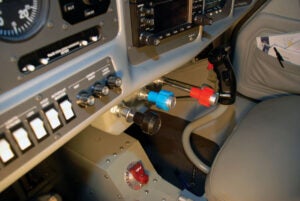
Similarly, engine controls should be checked for free and correct movement. The throttle, mixture and prop controls should move through their entire ranges of motion with a little cushion at the maximum point. The mixture control should shut off fuel and stop the engine when pulled all the way out. Correct any deficiencies and replace parts as needed.
(6) Batteries—for improper installation and improper charge. Make sure all battery and starter cables are clean and free of corrosion. Many hard-starting problems can be traced to poor cable maintenance. In an age when batteries seem to be getting smaller and our dependence on electrical power is getting greater, the battery becomes even more important. Get a battery-condition tester (load tester) and use it. These can be bought at Harbor Freight Tools for around $55. There is no way to tell how much power your battery really holds without such a tester. If you fly at night or in instrument conditions, this is really important. Your battery may start your plane just fine, but its amp-hour capacity may be much less than you think. Having your electrical system die 15 minutes after your alternator fails is not going to be a pleasant experience if you are in the dark or in the soup.
(7) All systems—for improper installation, poor general condition, apparent and obvious defects and insecurity of attachment. This is a catchall for anything on your plane that hasn’t been covered somewhere else. If it’s on your plane, it needs to be checked to be sure it works properly and is likely to continue working properly. This will vary from one aircraft to the next, so you will need to create a checklist with yours in mind.
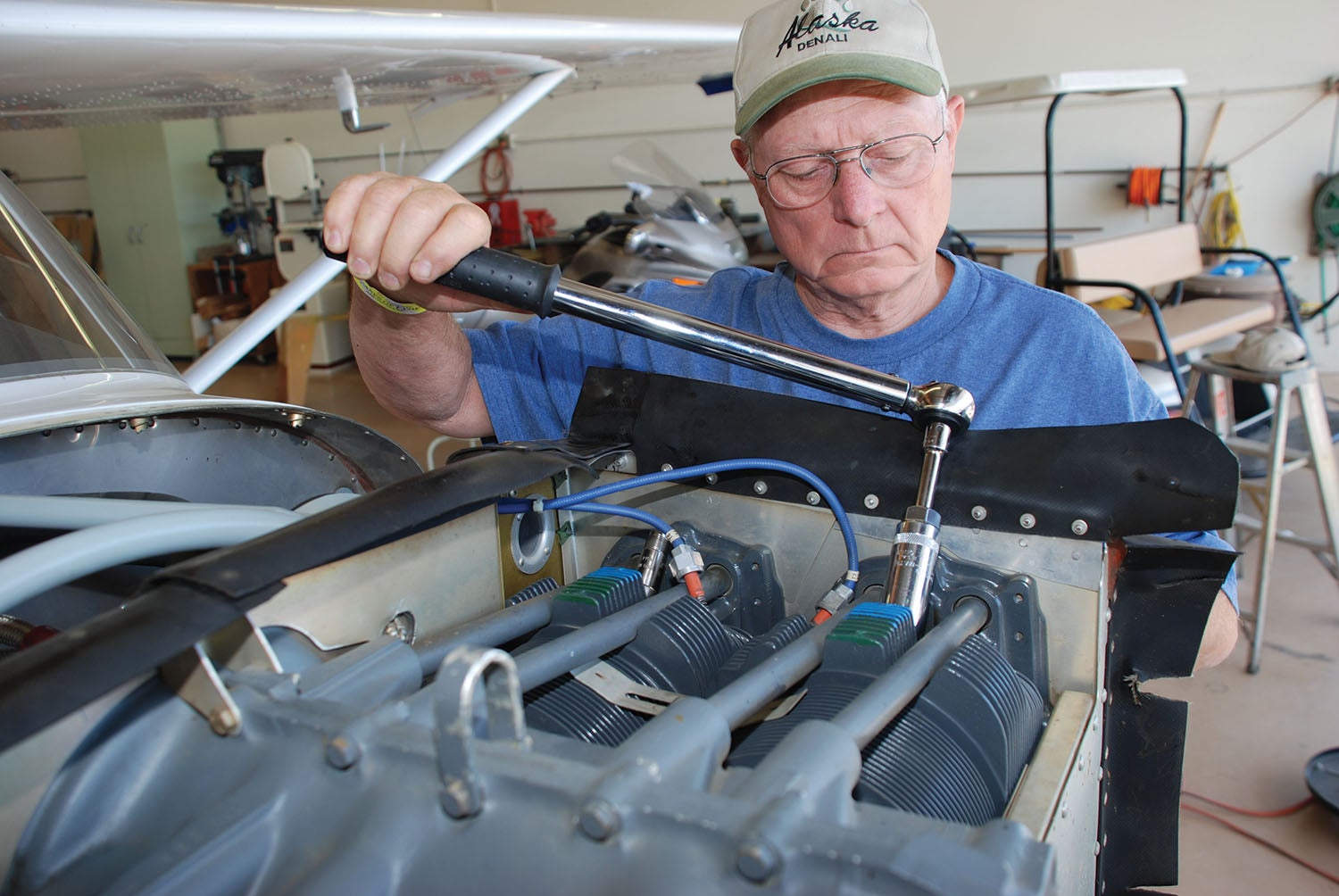
Engine and Engine Compartment
(1) Engine section—for visual evidence of excessive oil, fuel, or hydraulic leaks and sources of such leaks. This doesn’t say that you have to fix every little leak you see, but it does mean that you need to look into the cause of those leaks and fix any that pose a hazard. Leaking oil, fuel or hydraulic fluid can compromise the function of vital equipment. Leaking fluids can also be a fire hazard. Tracking down leaks can be frustrating, but it is important.
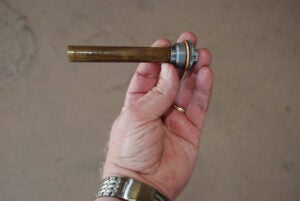
(2) Studs and nuts—for improper torquing and obvious defects. Check exhaust and intake flanges for proper tightness. Be sure to use the correct, verified torque numbers. Engine manufacturers don’t always make it easy to find this information, but it is always there somewhere. If in doubt, call the technical support phone number and ask. Re-torque engine case bolts if there is any sign of leaking. Check alternator belt tightness as per manufacturer’s instructions. It is always good to just go around the engine and check everything for general tightness just in case. Any problem areas need to be examined in more detail. By the way, right before your condition inspection is a good time to have your torque wrench calibrated.
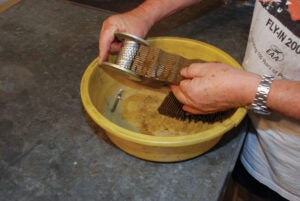
(3) Internal engine—for cylinder compression and for metal particles or foreign matter on screens and sump drain plugs. Drain the oil and remove the filter and sump screen. Check for metal and retain a sample for oil analysis. This includes cutting open the filter and checking for metal there, too. This is your best window into the internal condition of your engine. If you find metal, consult the engine manufacturer’s literature for allowable amounts and types. Take corrective action for anything that falls outside of acceptable parameters. Note that these will vary from one engine manufacturer to another. For example, metal that is perfectly acceptable to Lycoming could be reason for tearing down a Rotax engine.

A differential compression test should also be performed during your condition inspection. Be sure to get the proper tester—there are different sizes of control orifice, one for engines with bores less than 5 inches and another for larger-than-5-inch bores—and some experienced help if you haven’t done this test before. It isn’t hard to do, but there are definitely right and wrong ways to do it. If your compression is low, again, you need to consult the engine manufacturer’s publications to see how to interpret the readings. Lycoming, Continental and Rotax all have different ideas about what is and is not an acceptable compression reading and what you should do if one or more cylinders test low.
I would recommend adding a borescope examination to your engine inspection routine. Borescopes are now very reasonably priced, and they can reveal many things that a compression test cannot.
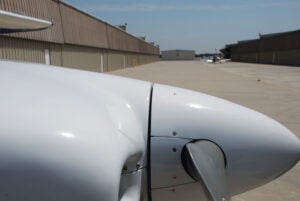
(4) Engine mount—for cracks, looseness of mounting and looseness of engine to mount. Cracks in the engine mount tubes are obviously unacceptable and must be repaired, as are any loose nuts or bolts, but less obvious problems can also arise. Check for chafing wherever anything is attached to or is near the engine mount tubes. Zip ties are especially problematic in this regard. Replace them with cushioned Adel clamps wherever possible. Engine mount bushings can also sag with age. Shimming can cure some sagging but at some point they need to be replaced. A prop spinner that has shifted downward in relation to the cowl is a good tipoff that the bushings are sagging.
(5) Flexible vibration dampeners—for poor condition and deterioration. These are not common but their condition is very important where they do occur. In this category we might also include Rotax drive clutches and prop speed reduction units.
(6) Engine controls—for defects, improper travel and improper safetying. Engine controls are not usually much trouble, but they are very important so test them for proper function and security. Make sure all required safety wire and cotter pins are in place.
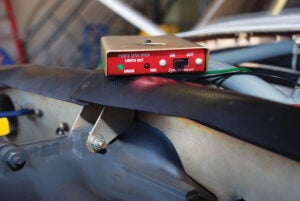
(7) Lines, hoses and clamps—for leaks, improper condition and looseness. Carefully inspect fuel and oil lines for integrity and security. Note that firesleeve can conceal small leaks, so look for any discoloration that may indicate a leak inside. SCAT ducts also need to be checked for wear, security of their clamps and heat damage. Zip ties can cut through SCAT and exhaust-pipe heat can cause rapid deterioration. Look them over carefully; when in doubt throw them out and replace them with new material. Rubber fuel and oil lines, even those pretty stainless steel-covered ones, should be considered for replacement after 10 years.
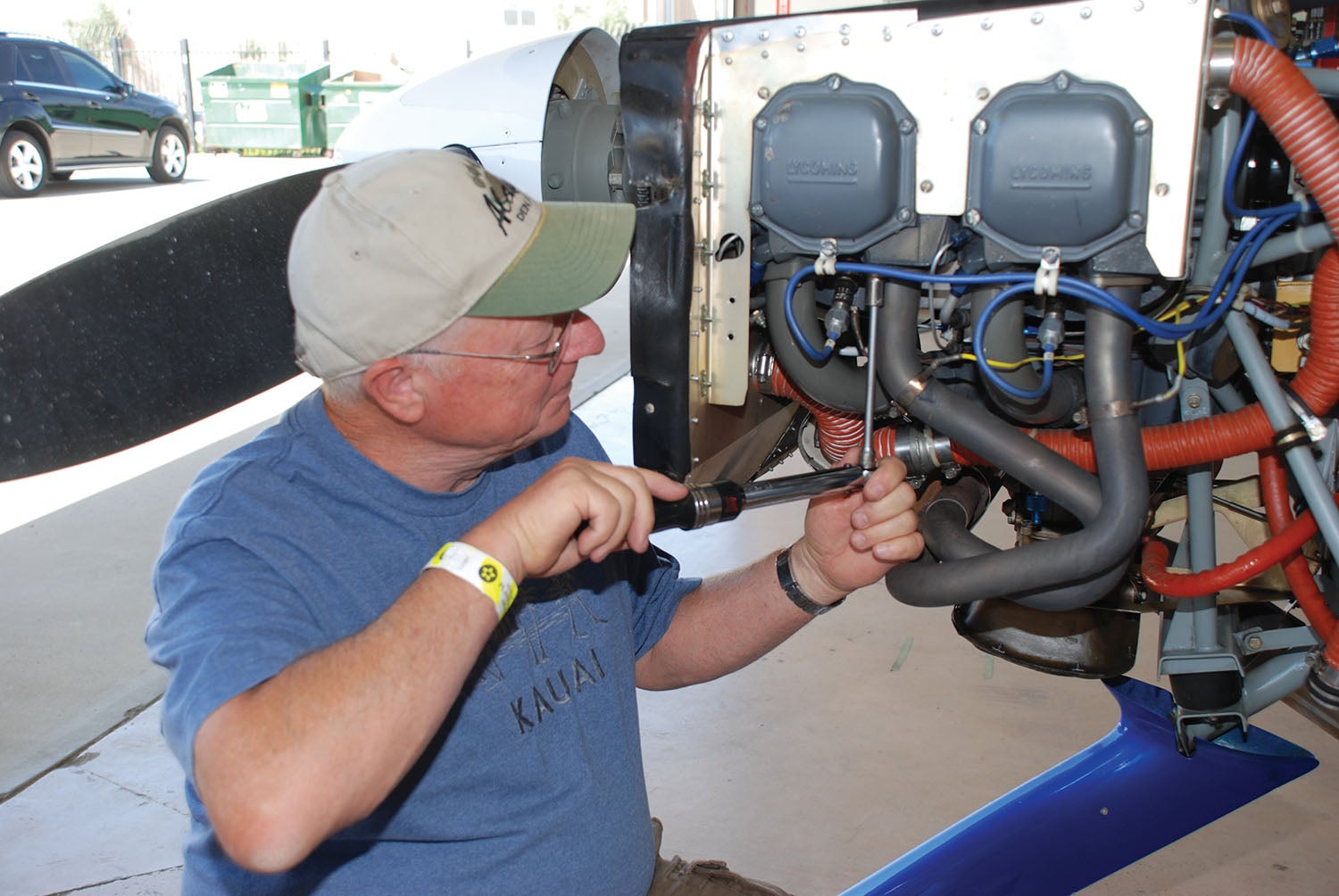
(8) Exhaust stacks—for cracks, defects and improper attachment. Exhaust leaks at the cylinder head flanges can quickly damage cylinder heads. Always check flange bolts for proper torque and replace gaskets and lock nuts at any sign of trouble. Other cracks also need immediate attention since they only get worse the longer they remain. Remove any shrouds over mufflers to look for leaks, especially when dealing with cabin heat system components. Exhaust leaks are serious, so don’t cut corners here.
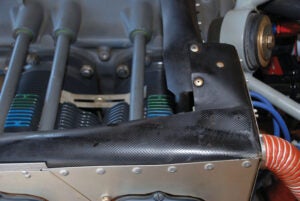
(9) Accessories—for apparent defects in security of mounting. Here we can include alternators, vacuum pumps, starters and backup systems of any kind. This will vary from one plane to the next, so you will have to devise your own checklist to cover all items.
(10) All systems—for improper installation, poor general condition, defects and insecure attachment. This is a catchall for anything you missed in another category. Develop a list to fit your plane.
(11) Cowling—for cracks and defects. Cowling cracks or heat damage need to be repaired whenever they occur. Sometimes a modification to the cowl or the installation of a heat shield will be required. Cowl fasteners also fall into this category. This is probably a good place to include engine baffles, too. Good baffles and seals work together with a sound engine cowl to efficiently cool your engine. It is worth an investment of time to get these things into good shape.
Where You Can Find a Detailed Checklist
Most kit manufacturers do not provide condition inspection checklists to their customers, arguably because every plane is different to some extent. Liability concerns also undoubtedly play a part. However, many manufacturers will supply a final assembly checklist that can be adapted to a condition inspection checklist. Builder groups and forums are probably the best place to look for time-tested checklists. Builders who have been flying for a few years will likely have pretty good checklists that they will share for the asking. Even a checklist for another type of airplane can serve as a model. Ask around at your EAA chapter and you are sure to turn up something you can use.
With all that said, be sure not to just use any checklist without carefully matching it up to your airplane. Different accessories or avionics will require different checklist items, as will any custom modifications you may have made. The FAA requirements need to be met in any case, so be sure to check your list against Part 43, Appendix D. For inspection and service requirements that apply to any manufactured item such as an engine, prop or avionics, be sure to check with the manufacturer of that item for guidance. Lycoming, Continental, Rotax and Hartzell, just to name a few, have extensive information available to owners and maintenance technicians regarding their products. They also have technical support staff to help if you need it. No question is a dumb question if it saves you from making an expensive mistake.
Next time we will look at the rest of the airplane, including the prop, wings, empennage, landing gear, avionics and miscellaneous items. We will also visit the subjects of service bulletins and airworthiness directives.














I am looking for an experimental annual inspection service in my area. Keene New Hampshire. Any suggestions?
Linda
To bad I don’t live in NH any more, I do safety condition inspections on experimental aircraft for $250. I’m in Nevada now.